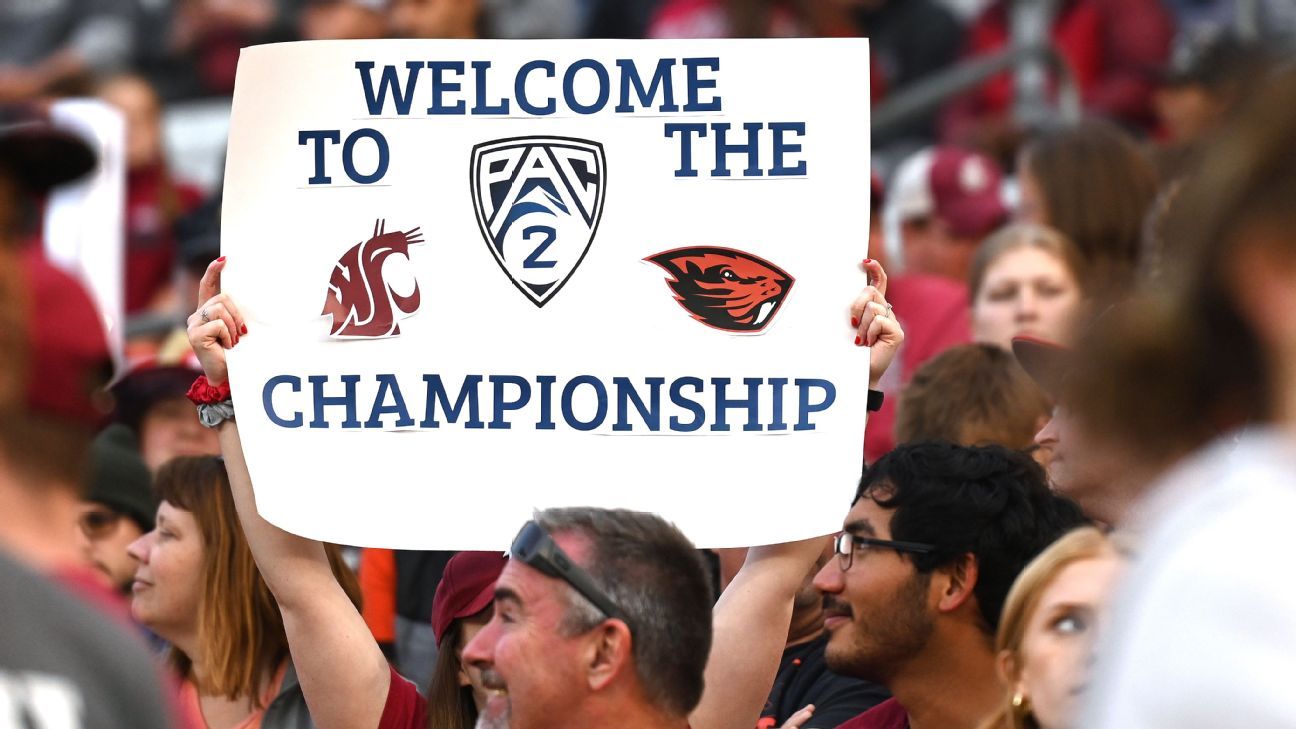In an alliance, the Beavers and Cougars would not be eligible for the conference championship but would play most games against MWC schools.

theathletic.com
Oregon State, Washington State discussing alliance with Mountain West: Sources
On Tuesday, Oregon State and Washington State won a preliminary injunction ruling that affirmed their claim as the sole governing members of the Pac-12. Now, the schools hope to finalize their future scheduling arrangements, possibly within the next few days.
There are several possibilities on the table, but numerous questions over their feasibility must be hammered out. A Mountain West presidents meeting is scheduled for Thursday.
According to three sources involved in the discussions, the most imminent possibility is for the two schools to remain “Pac-12” members, but form a football scheduling alliance with the Mountain West. The Beavers and Cougars would not be eligible for the championship of that conference but would play the majority of their games against each other and various MWC schools for either one or two years. While the schools would operate under the Pac-12 “umbrella,” they would not attempt to stage a conference championship for themselves.
A source involved in the discussions said “dialogue has increased” recently between the “Pac-2” and the Mountain West. The NCAA allows a two-year grace period for FBS conferences to get back to the eight-school requirement.
Under the model being discussed, the schools’ other sports teams would compete as “affiliate members” in the MWC and other Division I conferences like the Big West or WCC. In those sports, they could play a full conference schedule and be eligible for those leagues’ championships as well as automatic berths to NCAA tournaments.
“Our desire is playing for championships,” said a school source. “Obviously our focus is West, but it may be that some sports have to play in another conference.”
Were the alliance with the Mountain West to fall through, the schools have also identified enough opponents to create their own football schedules for next year while placing their other sports in various conferences, two of the sources said.
But in order to float across multiple conferences, the two schools would need other leagues willing to take their non-football sports, and those other conferences would need an incentive to do so. The schools might also need an NCAA waiver for that.
An announcement could come by the end of this week, though a second source involved in the discussions anticipated it could take until after Thanksgiving to finalize the details. Oregon State AD Scott Barnes told Portland-based sportswriter John Canzano on Tuesday, “We’ll have all the information for them when (coach) Jonathan (Smith) has his 1-on-1 sit-downs with the players” after the regular season. The football transfer portal opens Dec. 4, but the women’s soccer portal has already opened and the men’s soccer portal opens on Nov. 20.
Oregon State and Washington State would be “keeping the Pac-12 open” as an entity, to preserve the league’s IP and, most importantly, its assets. In addition to media rights and other revenue from its last year as a 12-school league, the two expect to receive future revenue streams like the league’s already-earned NCAA tournament units (an estimated $60 million), the remaining two years of their Rose Bowl contract (around $80 million) and two more years of CFP distributions (each Power 5 league received $79 million last year, though it’s not yet determined whether a two-team Pac-12 would receive the same amount).
“The (Pac-12) marks on our field would not change at all,” said a second school source.
But these discussions are a two-way street. The Mountain West and/or other conferences would need to get something out of the partnership. A few extra football games and some more inventory in other sports are likely not enough to increase television revenue in a meaningful way. The league wouldn’t want to simply provide a part-time home for Oregon State and Washington State, only for them to raid the MWC in a few years. It would want some kind of longer-term commitment. Yahoo Sports reported earlier this week that the Sun Belt passed on a proposal of a Pac-2 scheduling alliance, seeing no benefit to it.
The MWC does not have a Grant of Rights and believes its exit fee bylaw extends in perpetuity, according to a league source. That means it would cost at least $17 million for a member to leave with more than one year’s notice or at least $35 million if leaving with less than one year’s notice, no matter the status of the TV deal, which runs through 2025-26.
.
.
.
continued








